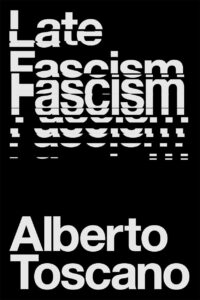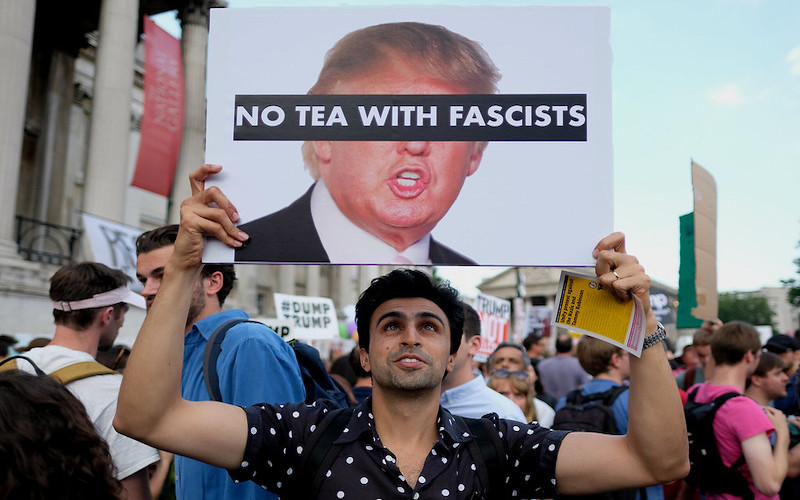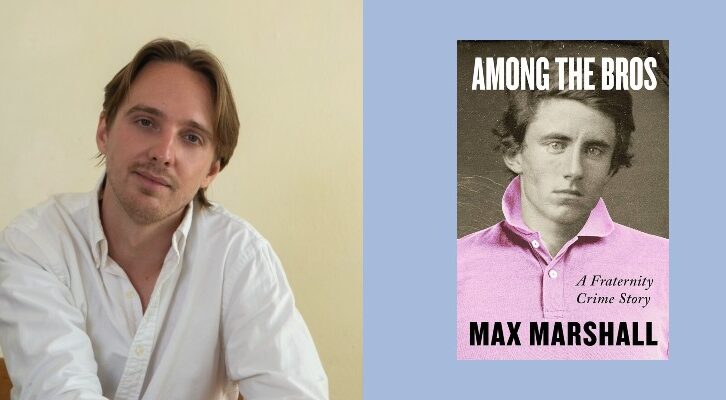US President Joe Biden brands Republican backers of his predecessor as ‘semi-fascists’; his Brazilian counterpart lambasts as ‘vandals and fascists’ the pro-Bolsonaro mobs who invaded the Congress in Brasilia on 8 January 2022; the mayor of Tel Aviv warns that Israel is sliding into a ‘fascist theocracy’; Modi’s Hindu-supremacist citizenship legislation is deemed the offspring of a ‘fascist vision’; while Russia’s invasion of Ukraine – grotesquely advertised as a ‘denazification’ programme – is seen to signal the regime’s accelerating fascisation.
Faced with the worldwide proliferation, consolidation and ascendancy of far-right political movements, regimes and mindsets, many leftists, liberals and even some conservatives have reached for the fascist label. The term is now bandied around with ease verging on abandon, particularly in the United States, but its resurfacing does speak to the urgent challenge of diagnosing the morbid symptoms that populate our present. My book, Late Fascism, is an attempt to contribute to a collective discussion about our reactionary political cycle. To write it, I turned to the archive composed by the theories of fascism produced in the past century, testing their capacity to shed light on our moment. What I found challenges many of the ruts, reflexes and commonplaces that debate on this extremely charged notion can and does devolve into.
The principal temptation for any contemporary thought on fascism is historical analogy. Faced with a toxic brew of social crisis, political violence and authoritarian ideology, the common sense reflex is to identify similarities between our present and the European catastrophe of the 1930s and 1940s, so as better to prevent its repetition (usually by reanimating liberalism as the sole antidote to illiberalism). Fascism is indeed a matter of returns and repetitions, but it is not best approached in terms of steps and checklists dictated by a selective reading of the Italian ventennio or the Third Reich.
Rather than treating fascism as a singular event or identifying it with a particular configuration of European parties, regimes and ideologies, for the purposes of thinking in and against our own day we need ‘to see fascism within the totality of its “process”’ This also entails approaching fascism in the longue durée, to perceive it as a dynamic that precedes its naming. It means understanding fascism as intimately linked to the prerequisites of capitalist domination – which, albeit mutable and sometimes contradictory, have a certain consistency at their core. W. E. B. Du Bois gave this core a name, still usable today: ‘the counter-revolution of property’. For all their deep differences and dissimilarities, the Ku Klux Klan terrorism against Black Reconstruction, the rise of squadrismo against labour organising in Italy, or the murderous codification of neoliberalism in Chile’s constitution can all be understood under that heading.
I do not intend ‘late fascism’ to operate like an academic brand, in competition with other names for our dire present. It is there to name a problem. At its most basic, like ‘late capitalism’ or ‘late Marxism’, it gestures toward the fact that fascism, like other political phenomena, varies according to its socioeconomic context. More provocatively, perhaps, it underscores how ‘classical’ fascist fixes – so intimately bound to the capitalist crises of their time, but also to an era of mass manual labour, universal male conscription for total warfare and racial imperialist projects – are ‘out of time.’ Ironically, many intellectuals and agitators leaning toward fascism today are actually profoundly invested in fantasies of a white, industrial, patriarchal modernity that have the post-fascist, post-war period as their seedbed. To recognize fascism’s anachronism is cold comfort, especially when liberal and neoliberal fixes to planetary crises – especially to disastrous anthropogenic climate change – are themselves criminally late and inadequate, leaving much room for manoeuvre to the radical right, which is able to reinvent its fantasies of domination directed at ‘women, nature and colonies’ in profoundly destructive ways.
An unreflexive struggle against fascism runs the risk of becoming sclerotic, self-indulgent or complicit with the very processes that body forth reaction, the lesser evil lending a hand to the greater one. When it does not question its own theoretical frameworks, its own habits of naming or indeed the pleasures of innocence, heroism and righteousness that may arise from these, anti-fascism can be its own lure.
Fiercely, viciously identitarian, fascism evades exhaustive identification. It repeats, but with differences, scavenging the ideological terrain for usable materials – not uncommonly from its antagonists on the left. It can flaunt its relativism while trading in absolutes. And for all its Cold War association with the hyper-statist logic of totalitarianism, it breeds its own forms of pluralism and its own visions of freedom. My wager has been that it is possible to think cogently about the elements of fascism as an anti-emancipatory politics of crisis without equating theory and definition, avoiding the checklist of tell-tale features or the streamlined schedule of the steps to fascist victory. A critical theory of fascism need not take the form of a diagnostic and statistical manual of political disorders. The radical theorists of racial and colonial fascism that have anchored my own reflections, as well as my criticisms of historical analogy, can attune us to four interlocking dimensions of the history and experience of fascism.
The first is that the practices and ideologies that crystallised, more or less laboriously, into Italian fascism, German Nazism and their European kin were presaged and prepared by the dispossession and exploitation of ‘lesser breeds without the Law’ wrought by settler-colonialism, chattel slavery and intra-European racial capitalism (or internal colonialism). I believe that our ‘late ’ fascism cannot be understood without the ‘fascisms before fascism’ that accompanied the imperialist consolidation of a capitalist world-system.
Second, fascism has been differentially applied, experienced and named across axes of race, gender and sexuality. As we learn from the writings of incarcerated revolutionaries of color in the United States, political orders widely deemed liberal-democratic can harbor institutions that operate as regimes of domination and terror for ample sectors of their population, in something like a racial dual state. This means that both in their political origins and their strategic imperatives, abolitionism and contemporary anti-fascism cannot be disjoined.
Third, fascism is grounded in a modality of preventive counter-violence, its desire for ethnonational rebirth or revanche stoked by the imminence of a threat projected as civilisational, demographic and existential. The epochal panic about the ‘rising tide of color’ and the ‘colored world revolution’ that seeded the rise of fascism after the First World War has morphed (barely) into narratives of replacement, substitution or cultural suicide shared by mass shooters and European prime ministers alike.
Fourth, fascism required the production of identifications and subjectivities, desires and forms of life, which do not simply demand obedience to despotic state power but draw on a sui generis idea of freedom. Whether in the guise of decentralized and deputized power or psychological wages, the fascist – as the phantasmatic synthesis of the settler and the soldier (or the cop) – needs to imagine him or herself as an active shareholder in the monopoly of violence as well as an enterprising petty sovereign, with race and nation serving as the affective and ideological vectors of identification with power.
If we keep these dimensions in mind – the longue durée of colonial racial capitalism, the differential experience of domination, political violence pre-empting an imagined existential threat, the subject as deputy of sovereign violence – we can begin to comprehend how contemporary fascist potentials converge and crystallize into forms of ‘border fascism.’ Whether that border be a physical demarcation to be walled and patrolled, or a set of fractal fault lines running through the body politic and multiply marked and policed, there is no circumventing the fact that, as ‘the cycles of capitalism driving both mass migration and repression converge with the climate crisis’ and a racial-civilizational crisis is spliced with scenarios of scarcity and collapse, the extreme and authoritarian right will map its politics of time – and especially its obsession with epochal loss of privilege and purity – onto the space of territory. It will also, like its twentieth-century forebears, seek to gain control over the borders of the body, to patrol the demarcations between genders and sexes.
Ruth Wilson Gilmore has encapsulated the idea of racial capitalism in the formula ‘capitalism requires inequality and racism enshrines it.’ Fascism, we could add, strives violently to enshrine inequality under conditions of crisis by creating simulacra of equality for some – it is a politics and a culture of national-social entrenchment, nourished by racism, in a situation of real or anticipated social catastrophe. As a politics of crisis, it is a limit case of ‘capitalism saving capitalism from capitalism’ (sometimes even creating the mirage of a capitalism without capitalism). Countering the fascist potentials and processes that traverse the global present therefore cannot mean subordinating the practical critique of capitalism to watered-down (un)popular fronts with liberals or conservatives. A ‘progressive’ neoliberalism – the one that lies in the back of most mainstream denunciations of fascism – is defined by the production and reproduction of inequalities and exclusions inconsistently accompanied by formalistic and formulaic commitments to rights, diversity and difference. Those who make common cause with it will have to do so in the awareness that they are ‘manning the imperial gates,’ allying with the cause to ward off its effects. Whoever is not willing to talk about anti-capitalism should also keep quiet about anti-fascism. The latter, capaciously understood, is not just a matter of resisting the worst, but will always be inseparable from the collective forging of ways of living that can undo the lethal romances of identity, hierarchy and domination that capitalist crisis throws up with such grim regularity.
____________________________

Excerpted from Late Fascism: Race, Capitalism and the Politics of Crisis by Alberto Toscano. Copyright (c) 2023 Alberto Toscano. Used by arrangement with the Publisher, Verso Books. All rights reserved.


















